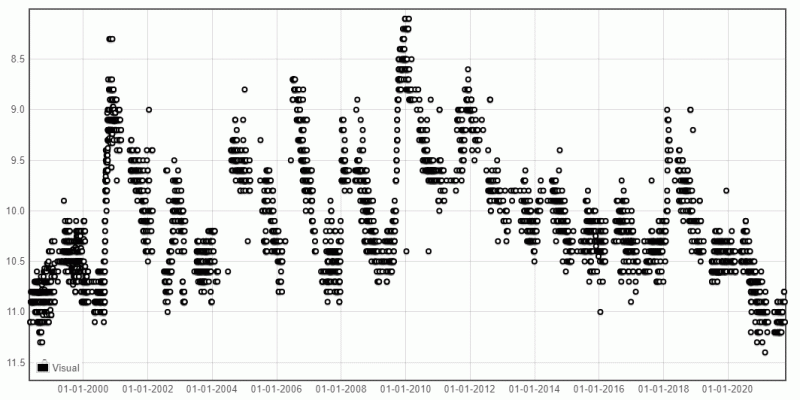Observing the bright symbiotic variable star Z Andromedae
2021 November 30
Lying just 2.5 degrees northwest of the fourth-magnitude star lambda Andromedae and close to the border with Cassiopeia can be seen the prototype star of a group of variables known as symbiotic stars – Z Andromedae.
Discovered in 1901 by Williamina Fleming of Harvard College whilst she was investigating observatory spectrum plates, she remarked at the time that the spectrum of the new star resembled that of a recently discovered nova in Perseus (GK Per) and catalogued the star as having a ‘peculiar spectrum’. It was to take another 30 years for Z And to be grouped with other stars of a similar spectrum. Finally classified as ‘symbiotic stars’ by Paul Merrill, a low-temperature M-type cool component along with HII emission lines of a hot star are easily identifiable in the spectra of the group.
We now understand these fascinating stars a little better. All symbiotic variables are interacting binary systems, in which material accretes from the cooler secondary star via a mass stream and disc (or the secondary star’s wind) to a hotter component – usually a white dwarf. Z And itself consists of a late-type M4 giant star and a magnetic white dwarf, which is accreting from the wind of the giant secondary in an orbit of some 758 days. Z And is also one of the few symbiotic stars known where the white dwarf produces an outflow of material through a ‘jet’ (CH Cyg and R Aqr are other well-known examples).
The photometric behaviour is fascinating to follow in small telescopes or binoculars. The visual range is 7.7–11.3V; Z And displays both short-amplitude variations of a few tenths of a magnitude and bright outbursts in excess of four magnitudes, taking the star into binocular range. The light curve of the American Assocation of Variable Star Observers (AAVSO),1 which is the most complete available, shows activity from 1907 to the present time.
The brightest outburst yet detected occurred in 1939–’40, reaching magnitude 7.0 and lasting about a year. This outburst followed a low state obtained in late 1937 and early 1938, when Z And had faded to below magnitude 11.5. During the next 60 years, several lower-amplitude outbursts brighter than magnitude 8.0 were recorded. In the year 2000, Z And began an active phase which saw the mean minimum magnitude rise by ~0.5 magnitudes, with a number of outbursts exceeding magnitude 9.0 and culminating in a bright, magnitude 8.0 outburst in early 2010. From this date, Z And has been fading slowly, occasionally interrupted by outbursts to magnitude 9.0 or fainter, until a below-magnitude-11.0 minimum was reached in late spring of 2021 (Figure 1). Signs of a recovery to above magnitude 11 began in late September, and at the time of writing (2021 Oct 9), Z And is around magnitude 10.6V.

Will Z And follow a similar pattern to that of the 1930s and undergo a bright outburst after this particularly faint minimum? Who can say, but monitoring this relatively bright and extremely interesting star seems a worthwhile thing to do over the coming winter months.
Z And is located at 23h 33m 40.0s, +48° 49ʹ 06ʺ, and although not circumpolar from the UK, can be followed well into the spring evening sky. A finder chart can be downloaded from the BAA Variable Star Section web page.2
Gary Poyner, CVs & Eruptive Stars Secretary
1 AAVSO light curve generator: aavso.org/LCGv2/
2 BAAVSS web page: britastro.org/vss/
| The British Astronomical Association supports amateur astronomers around the UK and the rest of the world. Find out more about the BAA or join us. |
